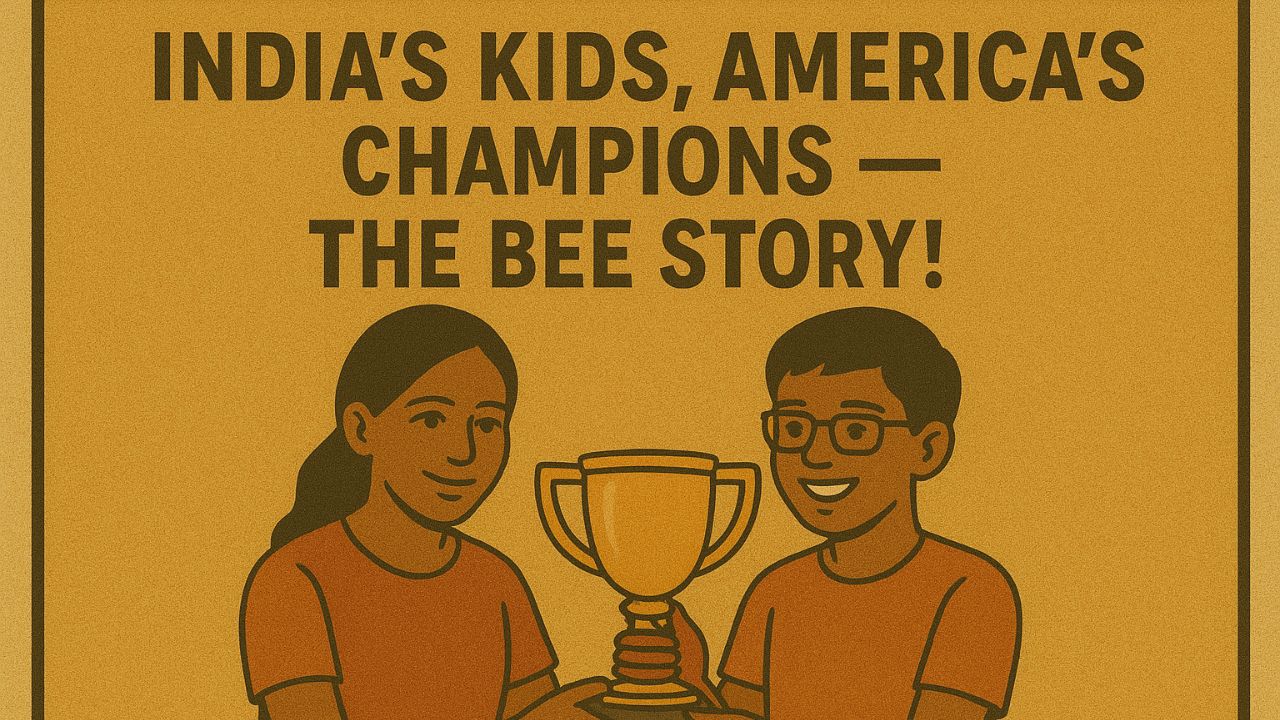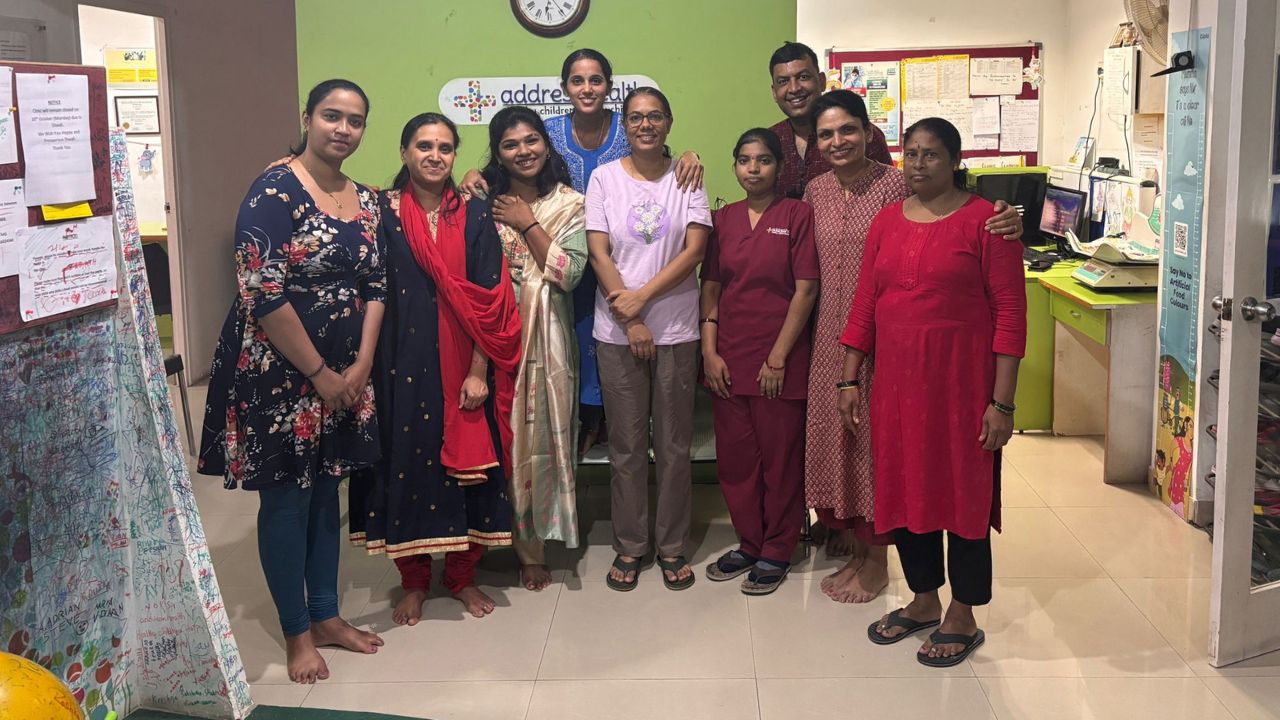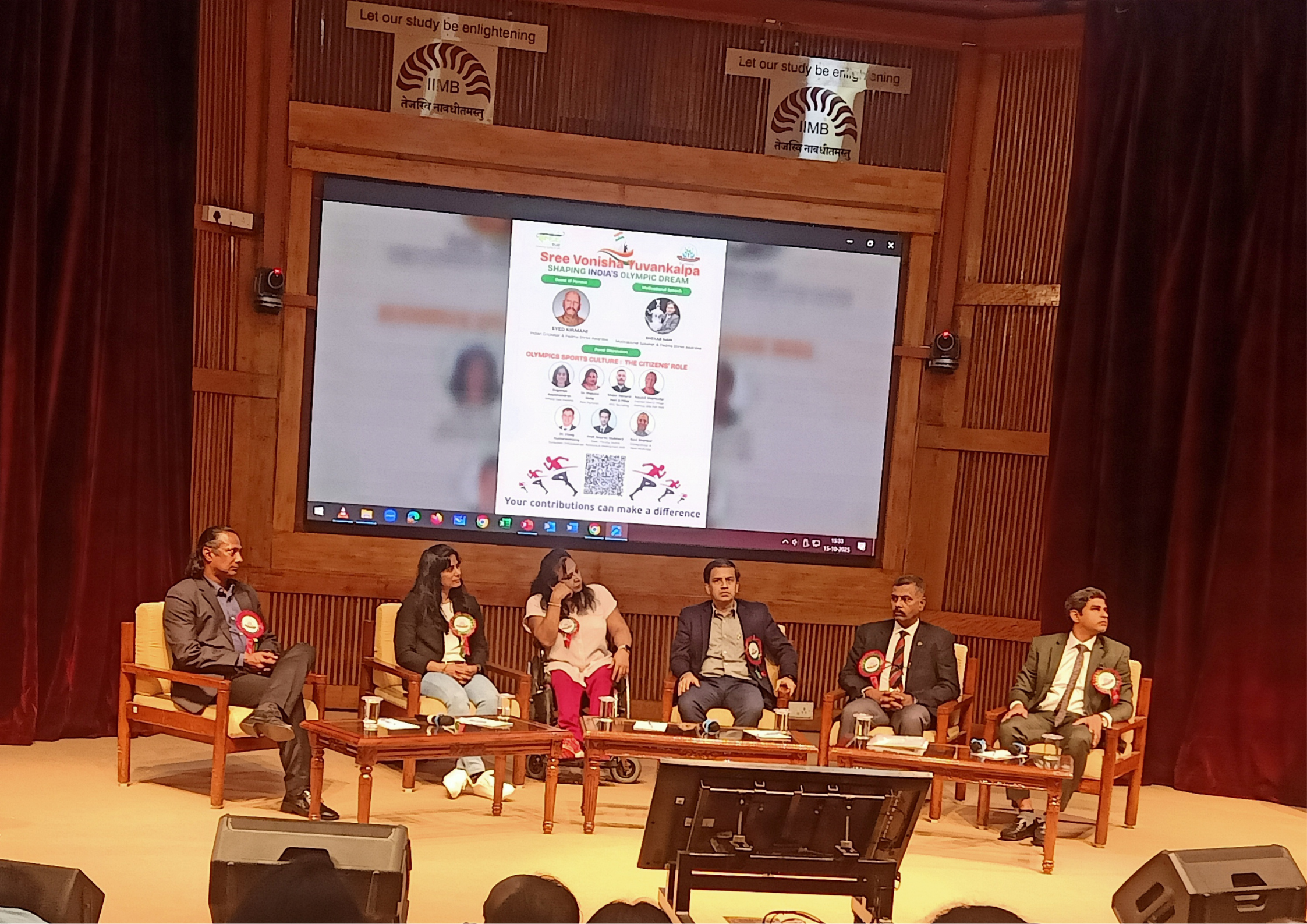Why India Itself Doesn’t Produce Bee Champs — But the U.S. Indian Diaspora Does

How environment, policy, and community pipelines turned spelling into an American success story for Indian families
Opening: a curious modern pattern
If you follow the Scripps National Spelling Bee (the big U.S. event) you’ve likely noticed something striking: a large share of recent champions are children of Indian origin. Between the late 1990s and the 2020s, Indian-origin contestants captured the lion’s share of titles—dozens of trophies in a relatively short time. That concentration is real, dramatic, and persistent. But if the talent seems to have Indian DNA, the explanation is not genetic. Instead, the phenomenon is a lesson in how migration policy, community organization, and cultural emphasis can combine to create a highly effective pipeline for excellence.
This article explains why the phenomenon is uniquely American, why India itself has not (so far) produced comparable numbers of Scripps champions, and what Indian parents in India can learn and apply locally—without importing unhealthy pressure.
The headline numbers (and what they mean)
To set the scale: recent reporting and historical counts show that a very high proportion of Scripps champions over the past two decades are of South Asian / Indian origin. Sources tracking winners note that from the late 1990s through the early 2020s, roughly three out of every four winners were Indian-origin—an extraordinary concentration given that Indian-origin people make up a small share of the U.S. population. Those statistics are the starting point for asking “why?” rather than the ending point.
Four structural reasons the U.S. diaspora built a spelling-bee engine
There are several interlocking structural reasons the U.S. Indian diaspora turned spelling bees into an ecosystem; together they explain why success clustered in America rather than India.
1) Immigration policy selected for a specific population mix
The modern wave of Indian immigration to the U.S. after the 1965 change in U.S. immigration law favored highly educated professionals (doctors, engineers, academics). That “cherry-picked” demographic arrived already fluent in English and accustomed to high academic expectations. These families often view focused educational achievement as a clear route to stability and mobility in a new country—and they invest accordingly. The socioeconomic and educational profile of many Indian immigrant households in the U.S. made sustained after-school activities and private coaching far more feasible.
2) Community organizations created a feeder system
Indian American families didn’t rely only on public schools. They built parallel infrastructures: weekend spelling clubs, community-run contests, and national organizations that feed into Scripps. The NorthSouth Foundation, for example, began running regional contests in the U.S. in the early 1990s and now organizes many events that provide staged competition experience and scholarship incentives. Likewise, the South Asian Spelling Bee (launched in the late 2000s) added a TV-worthy national contest that made the activity culturally visible and aspirational. These community systems function like youth sports leagues: they normalize practice, create mentorship chains (older champions coaching younger kids), and deepen the talent pool over time.
3) Representation and media amplified possibility (the “Spellbound” effect)
Representation matters. The 1999 documentary Spellbound followed several spellers (including Nupur Lala) and brought a new image into Indian-American homes: a kid who looked like us, from our community, could win on a national stage. That visibility is catalytic. After families saw relatable role models succeed, participation rose—creating network effects that amplify itself year after year. Media attention gave parents a social script: try spelling-bee clubs, expect disciplined practice, and aim for national success.
4) The competition’s structure favors training and strategy over hidden advantages
Spelling bees reward clearly teachable skills—etymology, root analysis, language families, and pressure-management. They are less dependent on athletic facilities, club memberships, or subjective judging. When an activity’s rules are transparent and repeatable, a community that values practice and has the means to support it will do well. The Scripps Bee’s meritocratic clarity made it a perfect target for families who enjoy measurable, repeatable improvement through focused effort.
Why India hasn’t produced comparable numbers of Scripps champions (yet)
If the roots are Indian, why doesn’t India produce the same champions in comparable numbers? The answer is a combination of timing, institutional differences, and priorities.
A. Different institutional pathways and fewer diaspora-style feeder organizations
In the U.S., the NorthSouth Foundation, South Asian Spelling Bee, and hundreds of local clubs act as feeders into Scripps. India has developed its own spelling competitions—organizations such as India Spelling Bee and many school-run contests—but the scale, repeatability, and linkage to the Scripps circuit have historically been weaker. India’s national events are more recent, and while they develop talent locally, they historically have not created the same chain of frequent high-pressure regional contests that play a major role in producing Scripps finalists. (Note: India Spelling Bee and other national efforts have grown in recent years—this is a dynamic space.)
B. English access and medium differences across India
The Scripps Bee rewards deep exposure to English etymology and literary conventions. In India, English-medium education is widespread in many urban and private schools, but not universal. Socio-economic and linguistic diversity means that even brilliant children in non-English-medium settings have less natural access to daily English practice and the kind of after-school resources that make sustained Scripps-level training easier. This structural gap affects the population base from which Scripps-caliber spellers can most easily emerge.
C. Different parental investment patterns and opportunity structures
Many Indian immigrant families in the U.S. have the financial and time flexibility to run weekend clubs, hire private tutors, or sacrifice work hours to supervise practice. In India, parental time and resources are often divided differently—larger households, multigenerational responsibilities, and different educational priorities (e.g., entrance exam coaching) can mean less margin for the sort of community-driven extracurricular ecosystem seen in the U.S.
D. The diaspora learned to treat the Bee as a replicable pathway
Once a few families in the U.S. showed success, networks spread the “how”—specific coaching approaches, mock bees, and etymology strategies. That operational knowledge diffused through temples, parent groups, and community organizations. In India, the pattern of diffusion is still emerging; local examples exist, but the systemic scaling that characterizes the U.S. diaspora’s pipeline is a more recent development.
Named examples that show the pattern
Concrete stories make the pattern easier to grasp.
- Balu Natarajan (1985) — One of the earliest Indian-origin champions whose win prefigured later trends. His victory showed the possibility and seeded local interest years before the larger wave.
- Nupur Lala (1999) — The dramatized profile in Spellbound that helped catalyze cultural visibility for Indian-origin spellers. Nupur’s story became a template families could imagine replicating.
- Pratyush Buddiga (2002), Kavya Shivashankar (2009), Nihar Janga (2016), and many others show the variety of backgrounds yet similar training habits: long practice hours, community coaching, and staged mock competitions. (Lists of champions and winning words are publicly available and show clustering by origin.)
These examples are not to claim innate superiority but to illustrate how pipeline effects and cultural infrastructure produce repeatable outcomes.
But India is catching up—slowly and with its own strengths
India now hosts several reputable spelling competitions (India Spelling Bee among them) and many schools run their own intra-school and inter-school bees. As English literacy grows and organized coaching expands, India will increasingly produce national and international contenders. Yet the U.S. pipeline has a two-decade head start, community capital, and a clear pathway to Scripps that India is only beginning to replicate.
Practical lessons for Indian parents (what you can do, now)
If you’re an Indian parent who admires the diaspora’s success and wants to give your child similar benefits without sacrificing balance, here’s a warm, actionable checklist.
Action Checklist: Build a healthy local pipeline at home and in your community
- Start with joy, not trophies. Read aloud, play word games, and make language fun before you bring in drills. Curiosity sustains effort better than pressure.
- Teach strategies early. Focus on roots, prefixes/suffixes, and language families—not rote lists. Those analytical tools transfer to all learning.
- Form or join a small study pod. Find 3–6 families at your child’s school or neighborhood and meet weekly for practice and mock bees. Peer energy reduces coaching costs and improves resilience.
- Invite a former contestant or a language teacher for a weekend workshop. A single high-quality workshop can jump-start proper technique.
- Use staged competitions. Create low-stakes local bees so children learn to perform under pressure and recover from mistakes.
- Leverage free resources. Scripps’ “Words of the Champions,” Merriam-Webster lists, and online etymology tools are excellent and low-cost.
- Rotate activities to avoid burnout. Pair word work with sports, music, and free play—varied experiences build creativity and long-term wellbeing.
- Document and celebrate effort. Praise strategy and improvement: “You used the Greek root — nice deduction!” rather than labeling innate brilliance.
- Be pragmatic about costs. Start small—community clubs reduce the need for expensive private tutors. If you plan travel to national events, budget early or crowdsource modest sponsorships from school/PTAs.
- Think long term. The aim should be to teach a set of lifelong learning tools—metacognition, public poise, and discipline—not just to win a trophy.
Costs & feasibility in India — a short realistic guide
Creating a local spelling pipeline in India is feasible and much less costly than U.S. Scripps circuits. Typical cost components:
- Local club/coach workshop: ₹1,000–₹5,000 per family annually (if costs are shared).
- Study materials and apps: ₹500–₹5,000 per year depending on paid subscriptions.
- Inter-school or city-level contest travel: ₹1,000–₹10,000 depending on distance and accommodation.
- Optional private tutoring (elite): ₹500–₹2,500 per hour (varies widely in metros). Most children progress well with community clubs and periodic professional coaching rather than full-time private tutors.
Start with low-cost steps—reading circles, school bees, weekend pods—and scale based on interest and enjoyment. Many Indian champions of the future will emerge from modest, well-organized local efforts rather than expensive, high-pressure routes.
A note of balance and values
The diaspora’s success is tempting to replicate wholesale, but cultural context matters. What works in suburban America—long hours, parent volunteers with time and money—may not be a perfect fit in every Indian community. The aim should be to borrow what is healthy: the focus on strategy, the social scaffolding of clubs, and the celebration of effort—while rejecting extremes that pressure children unduly.
Remember: the skills built by spelling—analysis, persistence, public poise—are useful no matter your child’s eventual path. If a child becomes a champion, that’s a joyful bonus. If not, the tools they learned will serve them in school, interviews, and life.
Closing: the future—two ways India can catch up
India is already making progress: national bees, school contests, and online communities are growing. If India wishes to produce champions at Scripps scale, it will need to:
- Scale repeatable feeder systems (local clubs → regional → national), akin to NorthSouth/SA Spelling Bee in the U.S.
- Increase English-reading exposure and affordable coaching access across socio-economic groups.
- Use media and role models to create representation and aspiration within India itself.
Until then, the U.S. Indian diaspora’s pipeline will remain a remarkable example of how community, policy, and persistence can transform a niche pursuit into repeated excellence—something that Indian parents at home can study, adapt, and, most importantly, humanely emulate.




